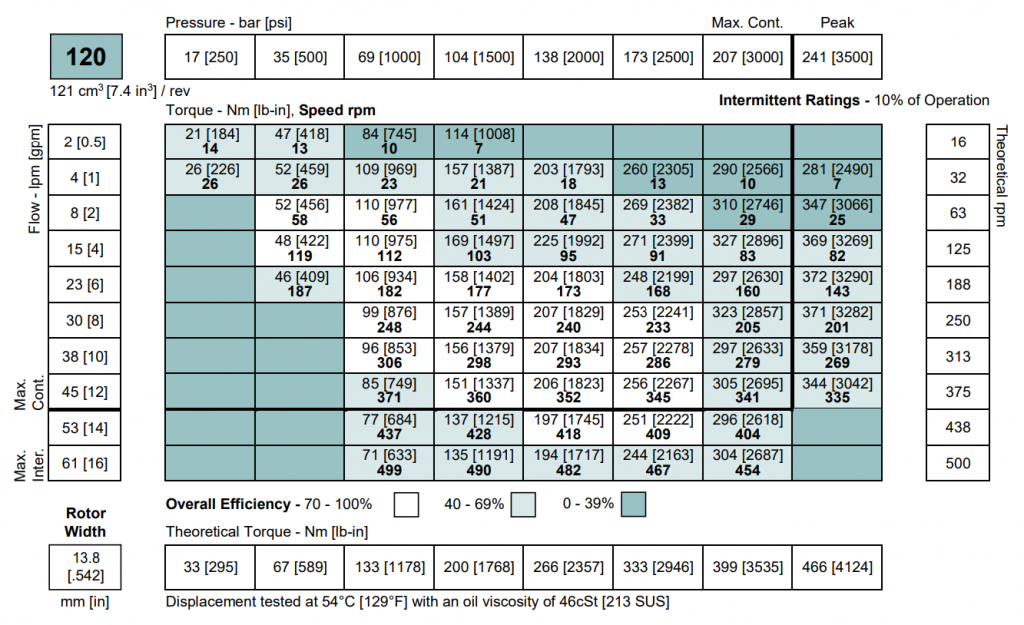Choosing The Right Hydraulic Orbital Motor for Your Application
A hydraulic orbital motor uses the energy in flowing liquid to create rotation. As with an electric motor, this can drive machinery or vehicles, but where orbital motors have an advantage is in low speed, high torque applications.
For efficient and reliable service over thousands of operating hours, the motor must be sized appropriately. A motor that’s too small will be overworked and may fail prematurely. Conversely, one that’s larger than necessary occupies more space, is likely inefficient, and will cost more than was necessary. What follows is some advice on selecting the right orbital motor for your needs.
Operating Principles
The heart of an orbital motor – sometimes called a rotor set – is a spur gear that rolls around the inside toothed surface of a larger ring. The inner spur gear is the rotor and is connected to the output shaft. The outer ring is the stator and it has one more tooth than the rotor.
This difference in the number of teeth divides the volume between rotor and stator into two chambers. Pumping fluid into one chamber pushes the rotor around the stator, so creating rotary motion.
The rotation speed and torque produced are dictated by the force the fluid exerts in the chamber. This in turn results from fluid flow rate and pressure. Torque in particular is determined by force, and a larger rotor set provides additional volume for creating more torque.
Consider Application Needs
Orbital motor selection starts with establishing the torque and speed needed. Start up conditions will probably be different from steady-state or constant operation, especially regarding torque. It is important to know both as for a short period, an orbital motor can deliver torque above that produced during sustained running.
The pressure and flow rate delivered by the pump is another important factor. (If the pump is yet to be selected, this leaves more flexibility in motor selection, providing the pump is sized appropriately later.)
Also, review side loads, as would be imposed by a pulley or sprocket on the output shaft. These affect the type and size of bearings used within the motor.
Review Motor Options
Hydraulic orbital motors are specified in terms of displacement, as output torque is determined by this and fluid pressure. Everything else being equal, a larger displacement motor will produce more torque.
Displacement in an orbital motor refers to the volume of fluid passing through the rotor set to produce a single revolution of the output shaft. It’s specified in terms of in3.
For a given displacement there is a range of flow rates and pressures over which the motor will run. A motor should be chosen to work within the maximum continuous and intermittent flow and pressure. Most motors operate over wide ranges of both, but the sweet spot of highest efficiency is usually significantly smaller.
To illustrate this with an example, consider a 4.6in3/rev displacement medium-duty CE motor from Impro Fluidtek. This will run with continuous pressure from 250 to 3,000psi but to maximize efficiency should not be subjected to more than 2,500 psi. In addition, at 2,500 psi flow should be between 8 and 12 gpm.
Manufacturers like Impro Fluidtek publish performance charts for each orbital motor they produce. Once torque, speed, pressure and flow are known, consult these charts to select the best motor for your application.
Get Expert Help With Orbital Motor Selection
A hydraulic orbital motor that’s sized appropriately for the application will deliver thousands of hours of service with only minimal maintenance. Selecting the right motor requires careful evaluation of the application environment and pump system (if known or previously established). To ensure all aspects are taken into account, contact us to arrange a review with a technical specialist before finalizing your selection.